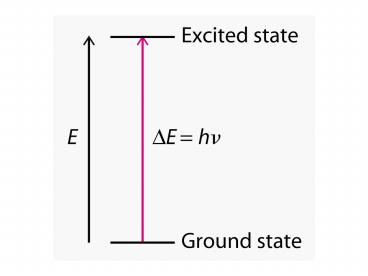Interpreting NMR Spectra - PowerPoint PPT Presentation
1 / 56
Title:
Interpreting NMR Spectra
Description:
Interpreting NMR Spectra. Calculate elements of unsaturation (1/2(2C 2-H), ignore ... Count number of signals (equals number of types of H) ... – PowerPoint PPT presentation
Number of Views:231
Avg rating:3.0/5.0
Title: Interpreting NMR Spectra
1
(No Transcript)
2
(No Transcript)
3
(No Transcript)
4
(No Transcript)
5
(No Transcript)
6
(No Transcript)
7
(No Transcript)
8
(No Transcript)
9
(No Transcript)
10
(No Transcript)
11
(No Transcript)
12
(No Transcript)
13
(No Transcript)
14
(No Transcript)
15
(No Transcript)
16
(No Transcript)
17
(No Transcript)
18
(No Transcript)
19
(No Transcript)
20
(No Transcript)
21
(No Transcript)
22
(No Transcript)
23
(No Transcript)
24
(No Transcript)
25
(No Transcript)
26
(No Transcript)
27
(No Transcript)
28
- Interpreting NMR Spectra
- Calculate elements of unsaturation (1/2(2C2-H),
ignore O, - halogens count as Hs
- Count number of signals (equals number of types
of H) - Check integration to determine ratio of types of
H - Check splitting to determine connectivity
- Use chemical shift table to identify types of H
- Work out fragments
- Assemble fragments, remembering rules of bonding
- Check result to make sure it matches formula and
number - of types of H.
29
(No Transcript)
30
C3H8 EoU0
Signal b, 12 units Triplet, 0.91 ppm
2 signals, 2 types of H
Ratio is 13 or 26
a is a septet, so 6 Hs adjacent b is a triplet,
so 2 Hs adjacent
a is at 1.3 ppm CH2? b is at 0.9 ppm CH3?
Structure is CH3CH2CH3
Signal a, 4 Units Septet, 1.34 ppm
31
C4H8O2, EoU1
3 signals, 3 types of H
Ratio is 466 (or 233)
a is a quartet, adjacent to 3H b is a singlet,
adjacent to 0H c is a triplet, adjacent to 2H
a at 4.1 ppm, CH2O? b at 2.0 ppm, CH3CO? c at
1.4 ppm, CH3?
Structure is CH3C(O)OCH2CH3
a, quartet 4 units
b, singlet 6 units
c, triplet 6 units
32
(No Transcript)
33
(No Transcript)
34
(No Transcript)
35
(No Transcript)
36
(No Transcript)
37
(No Transcript)
38
(No Transcript)
39
(No Transcript)
40
(No Transcript)
41
(No Transcript)
42
(No Transcript)
43
Mass Spectrometry
Three things happen to molecules inside a mass
spectrometer 1. The molecules are energized in
some way to create ions. 2. The ions are
separated based on their mass/charge ratio. 3.
The ions are detected.
lt 10-6 mm Hg
44
Electron Impact Ionizaton
- Generate electrons heated filament
- Accelerate electrons through a potential
difference (voltage). Commonly electron kinetic
energy is 80 eV. (conversion 1 eV 96.5 kJ/mole) - Enough energy to ionize and cause extensive
fragmentation.
45
Magnetic Sector Mass Spectrometer
46
Important Isotopes
47
Isotopes in MS
48
Branched Hydrocarbons
- The MS for branched saturated hydrocarbons are
similar, except certain fragments become more
prominent.
49
(No Transcript)
50
(No Transcript)
51
(No Transcript)
52
IR Spectrometer
- Lightsource, sample, wavelength selector,
detector - CW and FT
53
(No Transcript)
54
(No Transcript)
55
(No Transcript)
56
(No Transcript)































